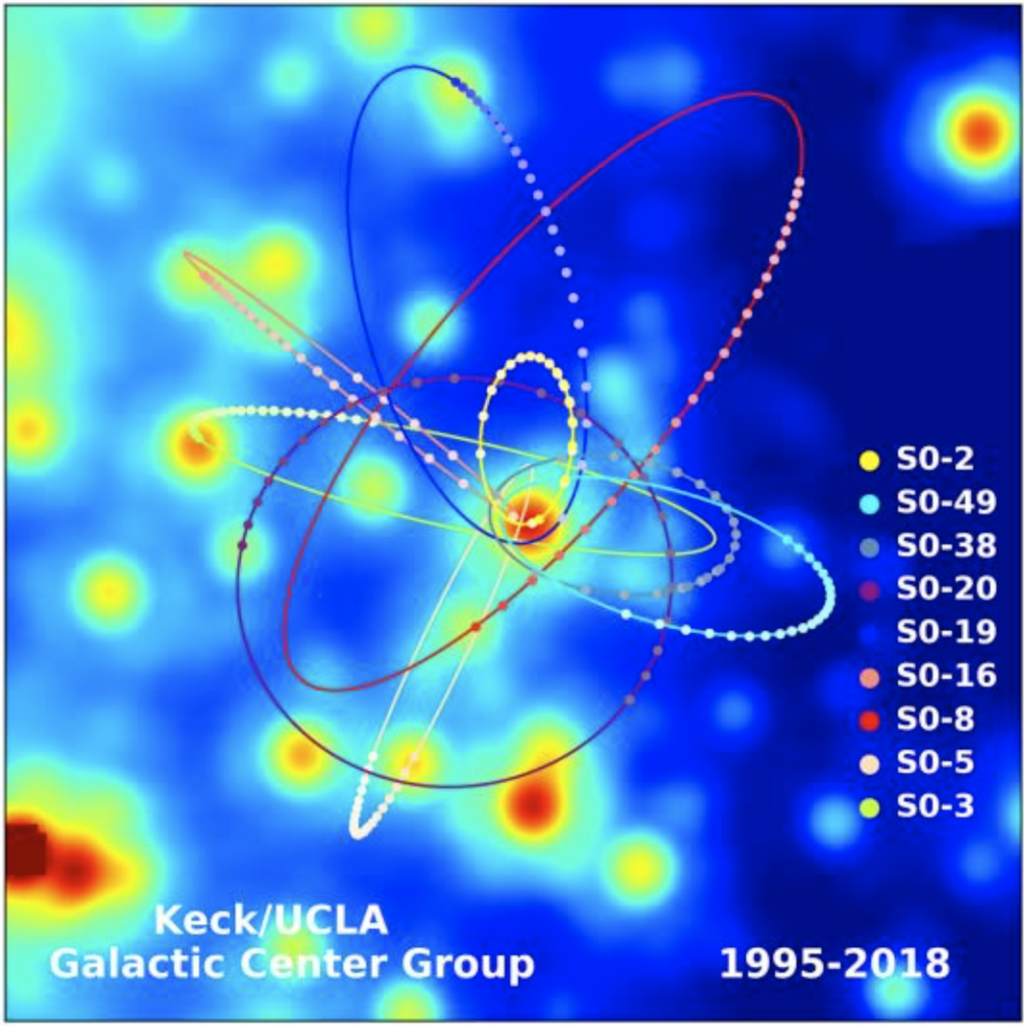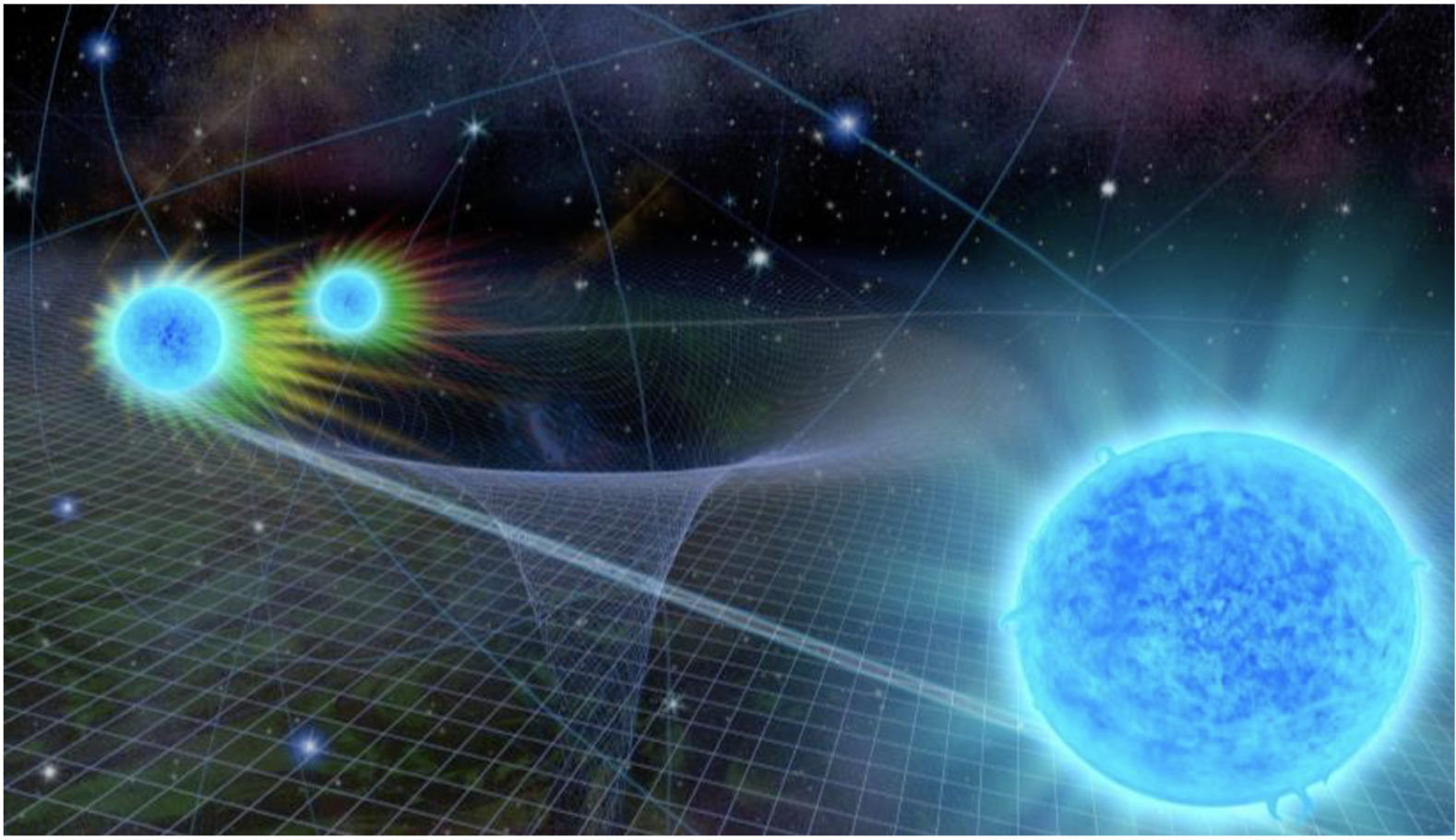Galactic Center
The Galactic center contains the closest supermassive black hole to Earth, which offers an opportunity to study the physics of black holes, and test the theory of General Relativity in extreme conditions. The orbits of several stars around the black hole (particularly the star S0-2) have been observed, which have allowed measurements of the black hole mass to be made.

The improved sensitivity of KAPA will triple the number of known short-period stars around the black hole. With more stars detected, more complete orbits will be observed, allowing GR to be tested for a range of masses.
The improved sensitivity will also allow measurements of the precession of the orbit of S0-2, another test of General Relativity. KAPA spectroscopic measurements of S0-2 will be able to determine its radial velocity (for more precise characterization of its orbit), and whether it is a young or old star.
